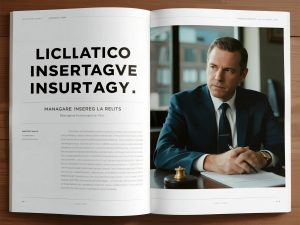Elite Private Health Insurance Premium Strategies for Affluent Families The landscape of private health insurance premium plans for high-net-worth individuals has evolved into a sophisticated ecosystem of customized healthcare solutions that transcend conventional medical coverage. These premium insurance offerings represent strategic investments in health security rather than mere expense management, providing affluent
families with unparalleled access to world-class medical care, personalized service, and comprehensive protection against healthcare-related financial risks. The fundamental distinction of these elite insurance products lies in their emphasis on quality, choice, and comprehensive coverage rather than cost containment, recognizing that health represents the most valuable asset for successful individuals and families. High-net-worth clients approach healthcare coverage with expectations that mirror their standards in other aspects of life, demanding discretion, excellence, and comprehensive solutions that address both immediate medical needs and long-term wellness objectives. The insurance carriers specializing in this premium market segment understand that their clients value service quality, provider access, and coverage certainty above premium considerations, leading to product designs that prioritize comprehensive protection and exceptional service delivery.The implementation of sophisticated private health insurance premium plans involves careful consideration of family health histories, lifestyle factors, geographic mobility, and personal preferences regarding healthcare delivery. These customized solutions typically feature extensive provider networks that include leading medical institutions worldwide, minimal restrictions on specialist access, and streamlined claims processing that eliminates the administrative burdens often associated with
standard health insurance. The premium structures reflect the comprehensive nature of coverage, including access to renowned medical centers, cutting-edge treatments, experimental therapies, and preventive care programs designed to maintain optimal health rather than merely treating illness. Many premium plans offer direct billing arrangements with healthcare providers, concierge medical services, and personalized health coordination that ensures seamless care delivery across multiple specialists and treatment facilities. The international portability of these policies provides peace of mind for globally mobile families, with coverage extending across borders and including emergency medical evacuation services that guarantee access to appropriate medical facilities regardless of location. The integration of mental health services, alternative therapies, and wellness programs reflects a holistic approach to healthcare that aligns with the comprehensive wellness priorities of successful families seeking to protect their most valuable asset—their health.Strategic High-Value Life Insurance Integration with Health Coverage
The coordination of high-value life insurance USA strategies with comprehensive health insurance coverage creates powerful financial protection frameworks that address both mortality risk and healthcare-related financial exposures for affluent families. These integrated approaches recognize that significant wealth requires comprehensive risk management strategies that consider both protection against premature death and safeguards against healthcare costs that could erode family assets. The combination of substantial life insurance coverage with elite health insurance products provides families with financial security across multiple dimensions, ensuring that medical expenses don’t compromise wealth preservation objectives while guaranteeing that loved ones remain financially secure regardless of health outcomes. The tax advantages of life insurance products, particularly their ability to provide income-tax-free death benefits, complement the healthcare funding aspects of comprehensive medical coverage, creating synergistic financial planning opportunities that optimize after-tax wealth preservation.
The strategic implementation of high-value life insurance USA solutions alongside premium health coverage involves careful consideration of family financial structures, estate planning objectives, and risk tolerance parameters. These insurance strategies often include policies with significant cash value accumulation features that can serve as supplemental retirement income sources or emergency healthcare funding mechanisms if needed. The underwriting process for these substantial life insurance policies typically involves comprehensive financial and medical evaluation that considers the complete picture of an applicant’s health status, lifestyle factors, and family medical history. The premium financing options available for high-value life insurance allow families to leverage existing assets to fund coverage without disrupting investment strategies or liquidity needs, creating efficient wealth transfer mechanisms that complement healthcare protection objectives. The certainty provided by life insurance benefits offers peace of mind that healthcare expenses, whether for chronic conditions, long-term care needs, or unexpected medical events, won’t compromise the financial security of loved ones or force the liquidation of valuable assets. When properly structured within comprehensive financial plans, high-value life insurance becomes an indispensable component of overall health and wealth protection strategies, providing financial resilience against both mortality risk and healthcare cost uncertainties through coordinated implementation of various insurance products and financial planning techniques.
Executive Disability Insurance Protection for Income Security
Comprehensive executive disability insurance protection represents a critical component of financial security for high-income professionals and business leaders whose earning capacity represents their most significant financial asset. These specialized insurance products address the substantial income replacement needs that arise when illness or injury prevents executives from performing their professional duties, ensuring that lifestyle standards, financial obligations, and wealth accumulation objectives remain protected during periods of disability. The fundamental distinction of executive disability coverage lies in its ability to provide benefits that reflect actual earning capacity rather than arbitrary maximums that often characterize standard group disability policies. High-income earners frequently discover that conventional disability insurance provides inadequate protection, with benefit caps that represent only fractions of their actual income, creating significant financial vulnerabilities during periods when they cannot work. Executive disability insurance solutions bridge these protection gaps through customized policies that consider total compensation packages, including bonuses, equity incentives, and other variable compensation elements that comprise substantial portions of executive earnings.
The implementation of sophisticated executive disability insurance strategies requires careful analysis of occupation-specific risks, income structures, and financial obligations to determine appropriate coverage levels and benefit durations. These policies typically feature own-occupation definitions that provide benefits if the insured cannot perform the specific duties of their regular occupation, even if they could work in another capacity. The elimination periods align with financial reserves and other income sources, creating coordinated protection frameworks that ensure continuous income flow during disability periods. The tax treatment of disability benefits depends on premium payment structures, with personally-paid premiums generally resulting in tax-free benefits while employer-paid premiums typically yield taxable benefits. The integration of disability insurance with other executive benefits, such as deferred compensation plans, retirement benefits, and equity arrangements, ensures comprehensive protection that addresses all aspects of executive compensation vulnerability. The underwriting process for these substantial policies involves detailed financial and medical evaluation that recognizes the unique risk profiles of high-income professionals, with premiums reflecting the significant benefits provided. The claims handling standards for executive disability insurance typically involve dedicated specialists who understand the complexities of executive occupations and income structures, ensuring prompt and appropriate benefit delivery when disabilities occur. The peace of mind provided by comprehensive disability protection allows executives to focus on recovery without financial concerns, knowing that their income and lifestyle remain secure regardless of health challenges that may arise.

Global Health Insurance Solutions for Internationally Mobile Affluent Families
Sophisticated global health insurance for expats provides essential medical coverage for high-net-worth families with international lifestyles, business interests, or residential patterns that span multiple countries. These comprehensive insurance solutions address the unique healthcare challenges faced by globally mobile individuals who require seamless medical coverage regardless of their location, language barriers, or healthcare system differences. The fundamental advantage of global health insurance lies in its ability to provide consistent quality standards, provider access, and claims processing across international borders, eliminating the coverage gaps and administrative complexities that often plague locally-purchased insurance products in different countries. Affluent expatriates and international business executives demand healthcare coverage that matches their mobile lifestyles, with policies that offer worldwide protection, emergency medical evacuation services, and access to premium medical facilities in all countries where they live, work, or travel. The customization available through global health insurance allows families to tailor coverage to their specific international footprint, whether they maintain primary residences in multiple countries, frequently travel for business, or have children studying abroad who require comprehensive medical protection.
The structure of comprehensive global health insurance for expats reflects the sophisticated needs of internationally mobile affluent families who value healthcare consistency, quality assurance, and service excellence across all geographic locations. These policies typically feature extensive provider networks that include leading hospitals and medical centers worldwide, with direct billing arrangements that eliminate out-of-pocket payments and reimbursement paperwork regardless of treatment location. The coverage includes emergency medical evacuation services that transport insured individuals to appropriate medical facilities when local healthcare resources are inadequate, ensuring access to quality care even in remote locations or countries with limited medical infrastructure. The preventive care components often include international executive health screenings, vaccination programs, and wellness services that address health maintenance needs across different regions and healthcare systems. The multilingual customer service and claims support provide assistance in various languages, facilitating communication and service delivery regardless of language barriers. The policy portability ensures continuous coverage during transitions between countries, eliminating coverage gaps that could occur when relocating or changing residency status. The integration of mental health services, dental coverage, and vision care creates comprehensive protection that addresses all aspects of health and wellness for families living international lifestyles. The premium structures reflect the global nature of coverage, with pricing that considers healthcare cost variations across different regions while providing consistent benefit levels worldwide. The peace of mind provided by global health insurance allows internationally mobile families to pursue their global ambitions without healthcare concerns, knowing that quality medical protection follows them wherever their lives and business interests take them.
Long-Term Care Insurance Premium Strategies for Wealth Preservation
Strategic long-term care insurance premium planning represents a crucial component of comprehensive wealth preservation for affluent families facing potential long-term care costs that could significantly impact family assets and inheritance plans. These insurance solutions address the substantial financial risks associated with extended care needs, whether for aging parents, spouses, or oneself, providing protection against costs that can rapidly deplete even substantial wealth if not properly planned for. The fundamental value of long-term care insurance lies in its ability to transfer the financial risk of care needs to insurance carriers, preserving family assets for intended heirs and preventing the forced liquidation of investments, real estate, or business interests to fund care expenses. High-net-worth individuals recognize that long-term care represents one of the most significant potential threats to wealth preservation, with costs for quality care often exceeding substantial amounts annually and lasting for multiple years. The insurance mechanism provides certainty in planning, allowing families to protect specific asset amounts from care-related depletion while ensuring that loved ones receive appropriate care without financial hardship.
The implementation of sophisticated long-term care insurance premium strategies involves careful consideration of family health histories, asset structures, and estate planning objectives to determine appropriate coverage levels and funding mechanisms. These policies typically offer flexible benefit options that allow customization of daily benefit amounts, benefit periods, and elimination periods to align with specific financial situations and risk tolerance levels. The inflation protection features ensure that benefits keep pace with rising care costs over time, preserving the purchasing power of coverage even if care needs arise decades after policy purchase. The partnership programs available in many states provide additional asset protection features that allow individuals to qualify for Medicaid while preserving assets equal to insurance benefits received, creating layered protection strategies. The tax advantages of long-term care insurance include potential deductibility of premiums as medical expenses and tax-free benefits when received, enhancing the efficiency of these protection strategies. The integration of long-term care insurance with life insurance or annuity products through hybrid policies offers alternative funding mechanisms that provide either care benefits or death benefits depending on circumstances. The underwriting process for these policies involves comprehensive health evaluation that recognizes the long-term nature of coverage and the significance of benefits provided. The claims handling standards ensure appropriate benefit delivery when care needs arise, with care coordination services that help families navigate the complex landscape of care options and providers. The peace of mind provided by long-term care insurance allows affluent families to plan for future care needs with confidence, knowing that their wealth preservation objectives remain protected regardless of health challenges that may develop over time.
Integrated Insurance Planning for Comprehensive Family Protection
The strategic integration of private health insurance premium plans with other insurance products creates comprehensive protection frameworks that address the multifaceted risks faced by high-net-worth families across health, disability, mortality, and long-term care dimensions. These coordinated approaches recognize that effective wealth preservation requires holistic risk management strategies that consider all potential threats to family financial security, from healthcare costs and disability income loss to premature death and extended care needs. The combination of various insurance products allows families to create customized protection portfolios that align with their specific risk profiles, financial objectives, and personal circumstances, optimizing coverage while managing overall insurance costs. The tax efficiency of integrated insurance planning enhances wealth preservation by leveraging the favorable tax treatment of different insurance products, from tax-free death benefits and disability benefits to deductible premiums and tax-deferred cash value growth. The flexibility of integrated insurance strategies provides adaptability to changing family circumstances, financial situations, and insurance needs over time, ensuring that protection remains appropriate throughout life’s various stages and transitions.
The implementation of comprehensive insurance integration involving high-value life insurance USA solutions alongside health, disability, and long-term care coverage requires professional guidance from insurance specialists, financial advisors, and tax professionals who understand the complexities of these sophisticated strategies. The coordination of policy design ensures that various insurance products complement rather than duplicate coverage, creating efficient protection frameworks that address all significant risks without unnecessary overlap. The premium financing options available for substantial insurance placements allow families to leverage existing assets to fund comprehensive protection without disrupting investment strategies or liquidity needs. The policy ownership structures consider estate planning objectives, tax implications, and control preferences, ensuring that insurance solutions align with overall wealth transfer plans. The ongoing management of integrated insurance portfolios involves regular review and adjustment to maintain alignment with changing personal circumstances, financial goals, insurance needs, and product availability. The claims coordination across different insurance policies ensures seamless benefit delivery when multiple coverages may apply to the same event or circumstance. The service standards associated with integrated insurance planning typically involve dedicated advisors who understand the complete picture of family protection needs and can coordinate among various insurance carriers and product types. The peace of mind provided by comprehensive insurance integration allows high-net-worth families to pursue their personal and financial objectives with confidence, knowing that their wealth and lifestyle remain protected against the various risks that could otherwise threaten their financial security and legacy plans.
Future Trends in High-Net-Worth Insurance Solutions
The evolution of insurance products for affluent families continues to advance, with emerging trends shaping the future landscape of executive disability insurance and other sophisticated protection strategies tailored for high-net-worth clients. Technological innovations are transforming underwriting processes, policy administration, and client service delivery, making complex insurance products more accessible and manageable for affluent families seeking comprehensive protection solutions. The integration of artificial intelligence and data analytics enables more personalized risk assessment, enhanced pricing accuracy, and improved policy performance through optimized coverage structures and benefit designs. The growing emphasis on transparency and customization reflects increasing client sophistication and demand for insurance products that align precisely with individual circumstances, risk profiles, and protection objectives. Sustainability considerations are influencing product development, with insurance carriers incorporating environmental, social, and governance factors into investment strategies underlying insurance products, particularly those with cash value accumulation features.
The regulatory environment continues to evolve, with changes to insurance regulations, tax laws, and financial reporting requirements influencing product design and implementation strategies for global health insurance for expats and other international coverage solutions. The increasing globalization of wealth has driven demand for insurance products that provide seamless international portability, multi-currency options, and cross-border compatibility to serve families with assets, interests, and lifestyles spanning multiple countries. The professionalization of insurance advisory services has elevated standards for client service, with specialized firms offering comprehensive solutions that integrate various insurance products with broader wealth management frameworks. The demographic shifts toward longer life expectancies and increased health awareness have heightened focus on long-term care insurance premium strategies and health-related protection solutions that address the extended planning horizons of modern affluent families. The ongoing innovation within the insurance industry promises to deliver increasingly sophisticated solutions that address the complex protection needs of high-net-worth individuals through personalized approaches that combine various insurance products within comprehensive financial plans. These evolving trends ensure that insurance will continue to play essential roles in helping affluent families protect their health, preserve their wealth, and secure their legacies against the various risks that could otherwise threaten their financial security and lifestyle objectives in an increasingly complex and interconnected world.




